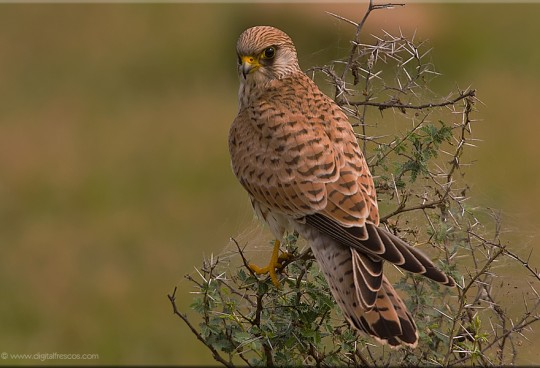The Spotted Redshank is a wary, noisy wader, larger and more elegant than the Common Redshank. It is often named “Sentinel of the Marshes” as it flies off while yelling a warning to other birds. The Spotted Redshank has beautiful sooty-black breeding plumage and long, needle-like bill. It is known for its spectacular “sky dance” at the beginning of the breeding season. The females often leave the breeding grounds up to a week before the eggs hatch, or desert their mates with brood at an early stage. The males rear the young alone, and migrate with the juveniles after the nesting period. The Spotted Redshank is migratory. It breeds in the northernmost regions of Eurasia, and moves S to spend the winter as far as equatorial Africa, India and SE Asia. It is threatened by habitat loss in the wintering areas and on migration.
The female is slightly larger than male, with usually paler plumage, showing white tips to crown feathers and more white-edged feathers on the underparts. The non-breeding adult has pale brownish-grey upperparts from forehead to mantle and scapulars (the latter with narrow fringes on the larger scapulars). Wing-coverts and tertials are spotted and notched whitish. The white to greyish-white underparts show grey wash on breast sides and upper flanks, whereas rear flanks and undertail are finely barred. On the head, we can see a white supercilium contrasting with the blackish lores. The cheeks are whitish. Legs and feet are mostly orange-red and the bill has orange-red base of lower mandible. The Spotted Redshank feeds primarily on both aquatic and terrestrial insects and their larvae, but it also takes crustaceans, molluscs, worms, small fish and amphibians.vIt sometimes forms dense flocks, and the group members seem to chase prey in unison, moving while pecking or running in the same direction. This species often wades in fairly deep water (20-30 cm), but it also swims, almost upending like a duck. It sweeps the bill from side to side through water, pecks, probes and jabs. It feeds both by day and night. It is classified as least concern by IUCN.
![]()






Sorry, the comment form is closed at this time.